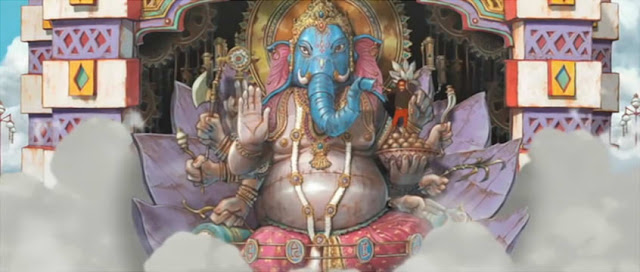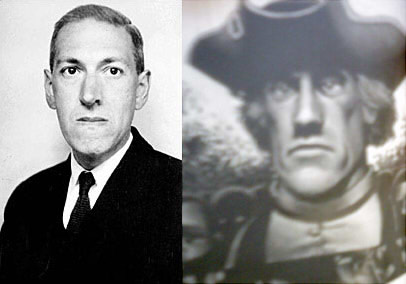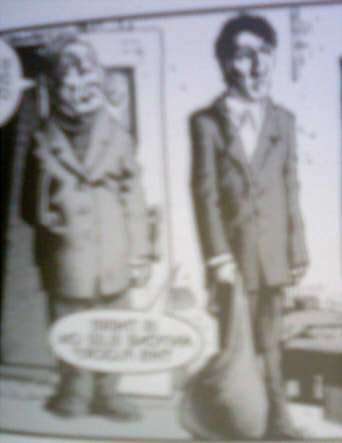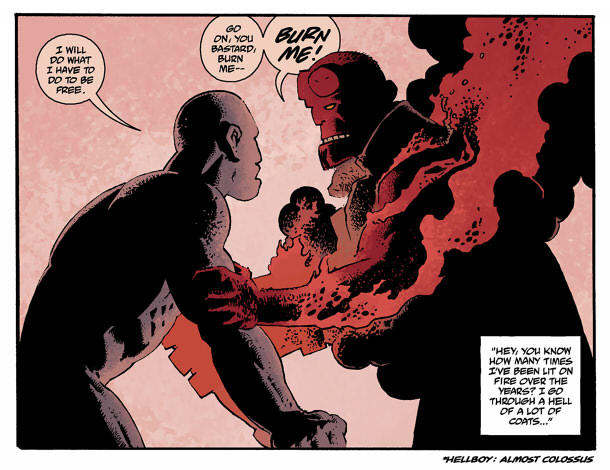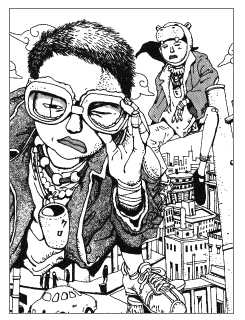 And the story itself is... it's an amazing blend of elements melded together into one big wrecking ball that will shatter you. Well, maybe it won't, but I sure enjoyed it. A pair of homeless boys named Kuro and Shiro (Black and White in the English localization) rule in the Takara district of a large Japanese city. They're referred to as the Cats, prowling the streets without a care and doing what they will. This is their city and Black makes it clear, having his violent way with those who rub him the wrong way and taking their money. This is his territory and he doesn't like others intruding. The local police and mob know this and leave the pair alone, but one day a new gang intrudes under the guise of gentrification. And this gang doesn't care about the established rules. The city is changing, renovations are sneaking in and old institutions are being replaced. Black and White are swept up in this change, but the city doesn't care.
And the story itself is... it's an amazing blend of elements melded together into one big wrecking ball that will shatter you. Well, maybe it won't, but I sure enjoyed it. A pair of homeless boys named Kuro and Shiro (Black and White in the English localization) rule in the Takara district of a large Japanese city. They're referred to as the Cats, prowling the streets without a care and doing what they will. This is their city and Black makes it clear, having his violent way with those who rub him the wrong way and taking their money. This is his territory and he doesn't like others intruding. The local police and mob know this and leave the pair alone, but one day a new gang intrudes under the guise of gentrification. And this gang doesn't care about the established rules. The city is changing, renovations are sneaking in and old institutions are being replaced. Black and White are swept up in this change, but the city doesn't care.In the beginning Black tells White to "come, it's play time." This is the perfect introduction to the story. The first chapter is the kind to make you realize just how important the first chapter of a story is in establishing it. It's a wonder to see the author stick through to the end to what's been established and also how the characters have developed. White wonders why he begins to feel sad when the sky turns black. Black reassures him that no one will ever break them cause they're all just junk.
Taiyō Matsumoto's art is pleasure to look at. In a discussion he states that he sees the art mainly as a tool to deliver the story and he tailors the style to suit his stories. It's obvious that he succeeds here. You can see that here is a man who know how to draw and stretches the limits. The lines have a quality to fit the mood, the city bends around the characters, and when Taiyō wants to draw action, he hits it smack on the head. It is spectacular.
 |
| "Don't you worry, Shiro. No one's going to break us." |
As for the animated adaptation by Studio 4°C, from when Black first tells White it's play time transitioning into the flying scene with the city panorama, I get the impression that I'm in for a good haul like the comic. And visually, the studio delivers. The city itself is as much a part of the story as the characters, so I was interested in seeing how it would be depicted. The studio blows this out of the water, rendering the city and blending it amazingly with the 2D animation. You can tell they're having fun with the designs and the abilities of their software. Studio 4°C's reputation is well-deserved.
 |
| Oh yes, this is going to be good. |
The adaptation as a whole is pretty straightforward. The various chapters of the books are condensed into little segments which are then cut-pasted and rearranged in the film. The dialogue is almost entirely pulled verbatim from the comic. It's a little jarring sometimes as it seems like a blitz of little tidbits, and I don't know how viewers not knowing the characters will manage remembering said tidbits. I had a good first impression but this slowly soured as I realized the film wasn't taking its own path and rather was cramming the entirety of the 600-something pages into less than 2 hours. Visually it is absolutely stunning. Story-wise, I don't know what the director was thinking. Why does this series even need to be crammed into a single film? That's taken away so much from this story it's a shame. Any strength in the film's story is the strength of the original source material. I don't see much of anything the director's improved upon in his adaptation besides the visuals. Some of the decisions you can understand and others you wonder why they were made. The drama for one definitely suffers.
You have to admire the director's persistence in delivering this film, and with such style. Maybe it's because I chose to watch this after reading the manga that the delivery falls so flat. I already know every twist and turn, and I don't get as much time to be acquainted with the characters. They're gone before I've gotten to know them. Some of the cast, mainly Kimura, don't do the original characters justice. The drama is rushed. I can't take my time to digest anything before we move on to the next course. It starts off running and doesn't let you stop to rest. By the time the second half rolls around I'm a little tired. This film might actually be better watched in two or three installments.
The comic is definitely up there. It's the sort of comic where I wonder if there's some sort of deeper message and meaning. I usually don't care about that sort of thing, but this comic makes you want to look deeper. And then I slap myself on the head and say "shut up, stop thinking, and enjoy the ride." The film adaptation is still good but reading the comic first ruined much of the experience for me. Don't read the book then watch the film the day after. Give it some time before watching the film or vice versa.
Also kind of funny that, I finished reading this before realizing that, the title is completely unrelated. Well maybe not completely since people like to look at the title which means reinforced concrete in Japanese (but jumbled) and pull some meaning out of it. The source of the title though is because the author kept on pronouncing tekkin konkreet (reinforced steel) as tekkon kinkreet as a child.



